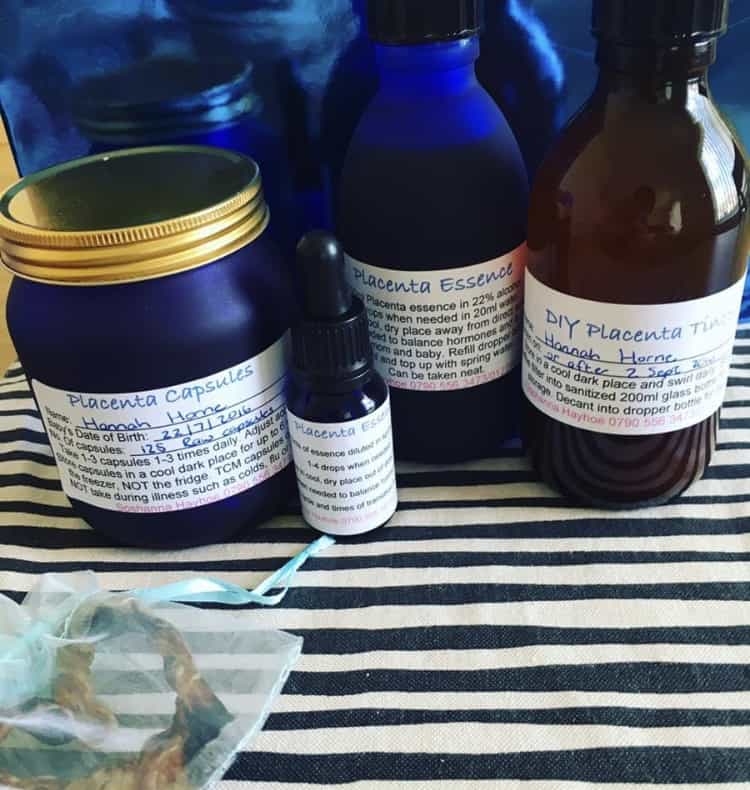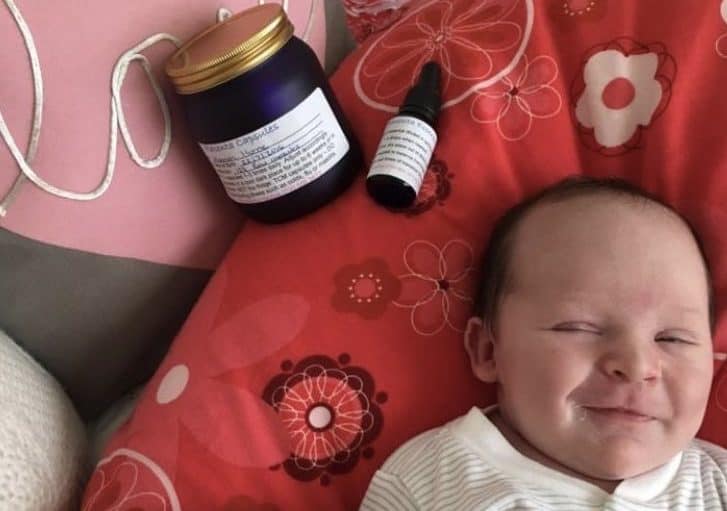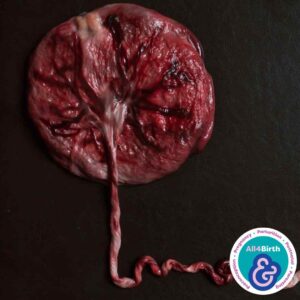Exploring placental uses in the postnatal period
Alicia Burnett
Midwife
All4birth Co-Lead
Instagram @midwife_alicia

Summary
The placenta (also known as the afterbirth) is often considered as clinical waste by maternity care providers.1,2,3 However, existing literature about traditional and contemporary postpartum placental uses and rituals undermines the idea that placentae stop being useful once pregnancy ends. While many women and birthing people do not choose to keep their placentas, and opt instead for clinical disposal where the placenta is either incinerated on site, or transported to an external disposal facility, others view the placenta as a sacred organ, 1,3,4 and specifically request to keep theirs for creative,4 medicinal3,4 or cultural reasons.3,4
Placenta art
Some families honour the placenta by hanging them in their homes as a symbol of longevity,4 while others use placentas to create imprints on white paper called placenta prints.3 The maternal and fetal surfaces of the placenta can be lightly pressed onto paper, with or without paint, to create an impression of these highly textured surfaces.
Placentophagy
Placentophagy refers to the ingestion of placental tissue, and literature has described placentas being consumed in smoothies,5 cooked,4,5 or eaten raw.4,5 Placentophagy comes under criticism from some researchers and healthcare professional because there is limited high quality evidence to support the purported health benefits associated with the practice; nonetheless, the existing evidence has also found that some African, South American, Central American, Middle Eastern, Caribbean and Asian communities utilise the afterbirth for medicinal purposes,7,8 with the placenta being used to create capsules (placenta encapsulation) 5 or tinctures.4,5 Some of the suggested benefits of placentophagy include:
- An easily absorbed source of iron3
- Accelerated postpartum recovery3,4,6
- Increased breastmilk supply3,4
- Prevention of postpartum depression4
- Enhanced mother-baby bonding3
- Increased energy levels4,6
- Prevention of the ‘baby blues’6
Placental burial
Some women and birthing people prefer to bury their placentas at home,4 or in another significant place, for cultural or religious reasons.4,9 In the UK, placental burial on private land is legal where the person executing the burial owns the freehold or has explicit permission from the freehold owner.10
Conclusion
Not all women and birthing people view the placenta as clinical waste; for some women, the value of the placenta extends beyond its function as a temporary, life-sustaining organ. In order to deliver holistic care,11 maternity care providers must take this into account when supporting women during labour and childbirth, and when providing information about their options for placental disposal.11
References
- Burns E. More Than Clinical Waste? Placenta Rituals Among Australian Home-Birthing Women. J Perinat Educ. 2014;23(1):41-49. doi: 1891/1058-1243.23.1.41. Accessed January 05, 2023.
- (n.d.). Anatomical waste solutions. https://www.stericycle.co.uk/en-gb/solutions/anatomical-waste. Retrieved January 05, 2022.
- Stenzel A. To Eat or Not to Eat: A Nuanced Analysis of the Placenta Question. Midwifery Today Int Midwife. 2015 Autumn;(115):59-62. PMID: 26591424.
- Mainah M, Bagelman J, Gitome J, Ndegwa P, Mwoma T, Kituko J, Kahumbi N. Placenta disposal rituals among somali refugees in Dadaab camp. Int J Ars Commer. 2021; 10(6):66-75. https://ijac.org.uk/articles/10.6.4.66-75.pdf. Accessed December 30, 2022.
- Farr A, Chervenak FA, McCullough LB, Baergen RN, Grünebaum A. Human placentophagy: a review. Am J Obstet Gynecol. 2018 Apr;218(4):401.e1-401.e11. doi: 10.1016/j.ajog.2017.08.016. Epub 2017 Aug 30. PMID: 28859955. Accessed January 29, 2023.
- Jordan, N. (2017). Introduction. In Jordan, N. (Ed.). (2017), Placenta Wit: Mother Stories, Rituals, and Research. Demeter Press.
- Baergen RN, Thaker HM, Heller DS. Placental release or disposal? Experiences of perinatal pathologists. Pediatr Dev Pathol. 2013 S ep-Oct;16(5):327-30. doi: 10.2350/13-05-1338-OA.1. Epub 2013 Jul 1. PMID: 23815756.
- Young SM, Benyshek DC. In search of human placentophagy: A cross-cultural survey of human placenta consumption, disposal practices, and cultural beliefs. Ecol Food Nutr. 2010;49(6):467–484. Intrapartum care for healthy women and babies NICE guideline.
- Mann BA. (2017) “Placental waste: wild boys, blood-clot boys and long-teeth boys. In Jordan, N. (Ed.). (2017), Placenta Wit: Mother Stories, Rituals, and Research. Demeter Press
- Human Tissue Authority. (2015). Guidance on the disposal of pregnancy remains following pregnancy loss or termination. https://content.hta.gov.uk/sites/default/files/2021-06/Guidance%20on%20the%20disposal%20of%20pregnacy%20remains.pdf. Accessed January 12, 2023.
- Intrapartum care for healthy women and babies NICE guideline. nice.org.uk/guidance/cg190/ifp/chapter/Delivering-the-placenta. Updated 2022. Accessed December 30, 2022.
Links to resources
 Books
Books
Edwards, N, Wickham S. (2018). Birthing your placenta: the third stage of labour. (2018). (4th ed.) Birthmoon Creations.
Jordan, N. (Ed.) (2017). Placenta Wit: Mother Stories, Rituals, and Research. Demeter Press.
 Websites
Websites
- Human Tissue Authority. (2015). Guidance on the disposal of pregnancy remains following pregnancy loss or termination. https://content.hta.gov.uk/sites/default/files/2021-06/Guidance%20on%20the%20disposal%20of%20pregnacy%20remains.pdf.
- Intrapartum care for healthy women and babies NICE guideline. nice.org.uk/guidance/cg190/ifp/chapter/Delivering-the-placenta. Updated 2022.











